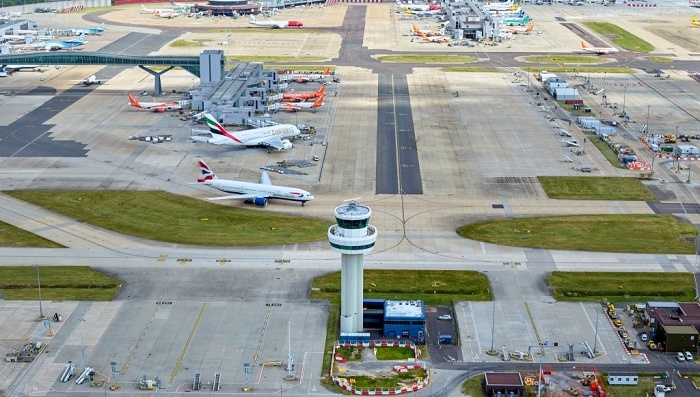
CAA publishes new airspace modernisation strategy for UK
The UK Civil Aviation Authority has today launched its new Airspace Modernisation Strategy that initiates the major overhaul of a key piece of national infrastructure.
The new strategy is in response to the government tasking the Civil Aviation Authority with preparing and maintaining a co-ordinated strategy and plan for the use of UK airspace up to 2040, including modernisation.
The structure of the UK’s airspace has remained the same for decades, despite an increase in demand from its users.
According to research conducted by NATS, flights in UK airspace are forecast to grow from 2.25 million per year in 2015 to 3.25 million in 2030 (an increase of 44 per cent).
If nothing changes, more and more flights will be delayed at UK airports each year with NATS predicting an average of 26.5 minutes of delay per delayed flight, with more than one in three flights from all UK airports expected to depart over half an hour late due to a shortfall in airspace capacity.
ADVERTISEMENT
Similarly, other airspace users such as general aviation and drone operators want more access to this infrastructure, while local communities want the adverse impacts better mitigated.
Modernisation is critical to ensure that this invisible piece of the UK’s national infrastructure is fit for purpose for the future.
The AMS sets out a new shared objective between the Civil Aviation Authority and the government for modernising airspace which is to deliver quicker, quieter and cleaner journeys.
This will mean more choice and value for consumers, allowing airlines to add new flights, reducing flight delays and enhancing global connections that can help boost the UK economy, while continuing to improve safety standards and being more environmentally friendly.
Coupled with the adoption of new technology by existing airspace users, it will also help pave the way for increased safe access for newer airspace users like drones and spacecraft.
For some, the increase in traffic may lead to an increase in noise, or the concentration of traffic can focus noise over a smaller area.
While it is impossible to reduce the impact of aviation noise for all communities, it is important that noise is managed as well as possible.
Airports should also consider as part of the airspace process whether they can change their airspace design to reduce noise or, more specifically, the health effects of noise.
The strategy also presents a new governance structure which sets out the industry’s responsibility for its delivery and how relevant stakeholders will be a part of that process.
Tim Johnson, policy director at the UK Civil Aviation Authority, said: “Airspace is a crucial part of the UK’s infrastructure and it must be maintained and improved.
“Unlocking the benefits of modernisation will make journeys faster and more environmentally friendly.
“Better airspace design can help with the management of noise impacts and improve access for existing and new types of airspace users.
“Airspace modernisation in the UK is complex, but essential.
“Our new strategy will ensure there is accountability and engagement for the delivery of this necessary reform.”
The Civil Aviation Authority has published its finalised AMS following public engagement earlier in 2018.
This document replaces the Future Airspace Strategy and sets out the ways, means and ends of modernising airspace through 15 initiatives that will modernise the design, technology and operations of airspace, initially focusing on the period until the end of 2024.
These include the removal of all fixed routes in upper airspace so aircraft can fly fully optimised routes, a fundamental redesign of the terminal route network using precise and flexible satellite navigation, and the focus on electronic surveillance solutions to improve safety and enable better integration of all airspace users.

